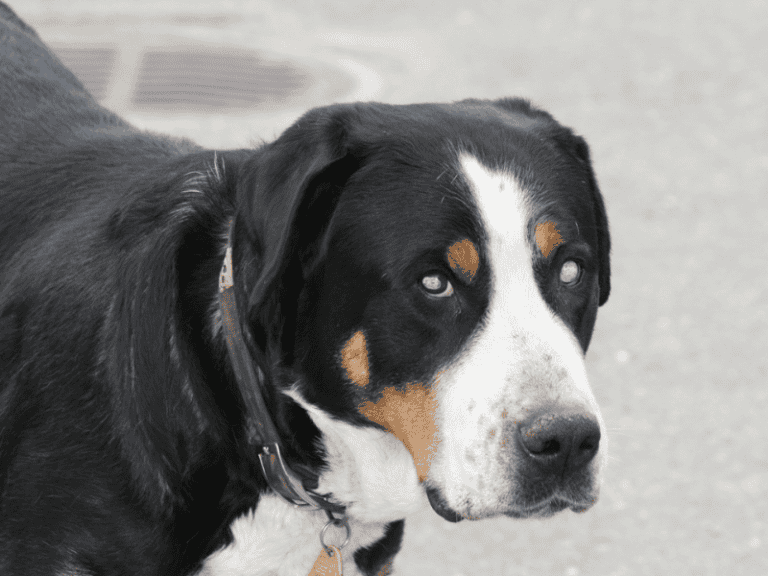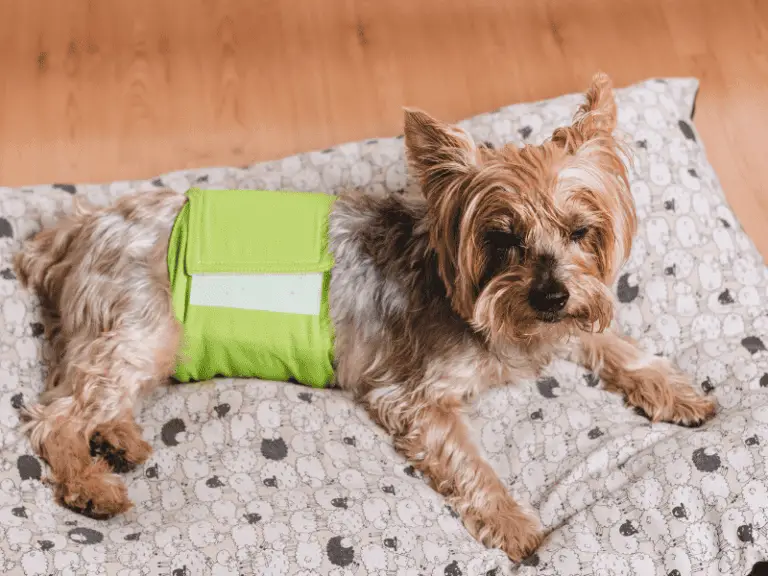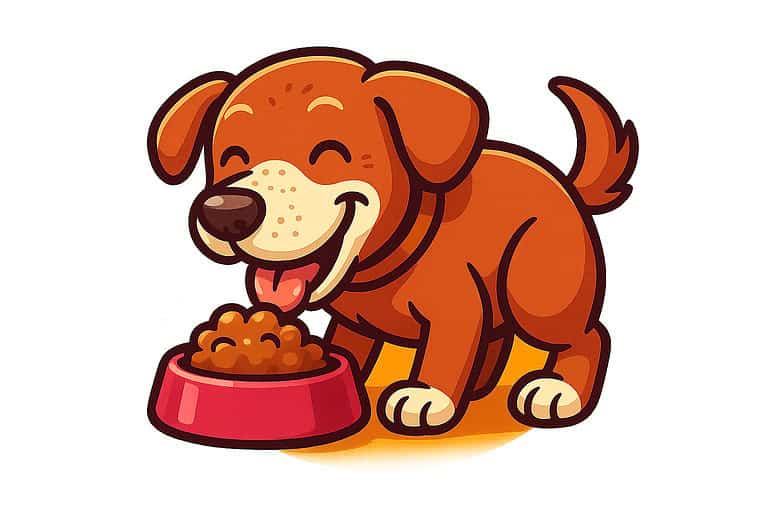How to Keep a Diabetes Journal for Your Dog

When your senior dog gets diagnosed with diabetes, it can feel overwhelming. Suddenly, you’re juggling insulin shots, special meals, and regular vet visits.
It’s a lot to manage, honestly. But there’s something that can make the whole process smoother for both you and your pup.
A diabetes journal helps you spot patterns, catch problems early, and work with your vet to keep your dog feeling their best. Think of it as a daily diary for everything, meal times, insulin doses, water intake, and energy levels.
You don’t have to be a medical pro or spend hours scribbling notes. Even a basic tracking system gives you and your vet what you need to adjust treatments and notice warning signs.
Once you get in the groove, it’s as routine as filling their food bowl. Trust me, it gets easier.
Why Track Your Senior Dog’s Diabetes?
Detailed records help you catch issues before they become serious. Your vet can use this info to adjust treatment and prevent sudden blood sugar changes.
Spotting Early Warning Signs
Your senior dog can’t tell you when something feels wrong. But their daily patterns say a lot.
Tracking eating, drinking, and bathroom habits helps you notice changes that might otherwise slip by.
Watch for these warning signs:
- Drinking a lot more water than usual
- More frequent urination or accidents
- Eating less or seeming extra hungry
- Acting tired or less playful than normal
Maybe your dog drinks double what they did last week. Without a journal, you might blame the weather. But if you see it’s happening for days, it’s a pattern.
Weight changes in senior dogs are sneaky. Daily notes help you catch gradual weight loss that you’d miss at a monthly weigh-in.
Energy levels are hard to judge day by day. But if you jot down activity each morning, you’ll see clear patterns. Three days of low energy? Time to call the vet.
Better Communication With Your Vet
Your vet needs real details to make the best choices. Saying “he seems tired” doesn’t help much, but showing two weeks of data really does.
Bring these to your appointments:
- Exact insulin doses and times
- Food amounts and feeding times
- Water intake
- Bathroom schedule changes
- Activity levels and odd behaviors
Your journal makes vet visits more productive. Instead of guessing about last Tuesday, you just flip to the page and share what actually happened.
Vets can fine-tune insulin doses when they see patterns in your data. If blood sugar spikes every Wednesday, they can help figure out why.
Tracking everything also lets your vet spot medication side effects early. When you write it all down, it’s easier to tell diabetes symptoms from drug reactions.
Reducing Surprises With Medication
Insulin needs can change in senior dogs without warning. Your tracking system acts as an early alarm for these shifts.
Daily tracking helps prevent:
- Dangerous blood sugar drops
- Missed or double doses
- Insulin storage mistakes
- Timing errors
Ever wonder if you actually gave the morning insulin or just thought about it? Your journal solves that. Check the box, jot the time, and move on.
As dogs age, insulin needs can shift. Your records show exactly when changes started, making it easier for your vet to adjust doses.
Sometimes insulin loses strength if it’s stored wrong or gets old. If your tracking shows the same dose isn’t working, you’ll know to check the medication first.
Setting Up Your Dog’s Diabetes Journal
A good diabetes journal makes tracking your dog’s health easier. The right setup helps you keep up with the routine.
Choosing the Right Format
You’ve got three main options for your dog’s journal. Each one works better for different people.
Paper journals are great if you like writing things out. Grab a notebook or print your own forms. Lots of folks keep their journal near the food bowls or insulin.
Digital apps on your phone or tablet make logging quick. You can set reminders and share info with your vet right away. Some apps even make charts for you.
Computer spreadsheets let you get detailed and organized. You can make graphs and sort info by date. Excel or Google Sheets work well for this.
Pick whatever you’ll actually use every day. If your phone is always nearby, go digital. If you love pen and paper, stick with that.
Supplies You’ll Need
For a paper journal, choose a sturdy notebook that can handle daily use. Lined pages or graph paper help keep things tidy.
Grab a few reliable pens that won’t smudge. Keep extras close by so you’re never searching for one.
A small ruler helps make neat columns, if you’re into that. Colored pens can highlight different data too.
For digital journals, just make sure your device is charged. Download your app and set it up ahead of time.
Have backup supplies ready. Keep an extra notebook or make sure your digital files are saved in the cloud.
How to Create an Easy-to-Use Layout
Keep your journal layout simple. Make columns for the most important daily info.
Essential columns:
- Date and time
- Insulin dose
- Blood sugar reading (if you test at home)
- Food amount and type
- Exercise or activity level
- Symptoms or changes
Leave space for notes about your dog’s behavior. Sometimes little details end up mattering.
Stick with the same layout each day. It helps you fill it out faster and makes it a habit.
Some people like weekly or monthly pages to see bigger patterns. Try it for a few days and tweak as needed.
The best journal is the one you’ll actually use. Don’t overthink it.
Essential Information to Record Daily
Tracking blood sugar, insulin, eating, and daily behavior gives you the full story on how diabetes affects your dog.
Blood Glucose Levels
Blood sugar numbers tell the main story. Check levels at the same times each day, usually before meals and insulin.
Most dogs need testing twice a day: morning and evening. Your vet will tell you exactly when.
Write down the exact number from your glucose meter. Don’t round up or down, even if it’s tempting.
Record:
- Exact glucose reading
- Time of test
- How long since the last meal
- How long since the last insulin dose
If your dog’s number is very high (over 300) or very low (under 80), call your vet right away. These are emergencies.
Some days, numbers bounce around more than usual. Weather, stress, or excitement can all play a role.
Insulin Doses and Timing
Getting insulin timing right matters a lot. Even being 30 minutes late can mess up blood sugar for hours.
Write down the actual time you gave the shot, not just the planned time. Life happens, and sometimes you’re a few minutes late.
Note which area you used for the injection. Rotating spots helps prevent soreness.
Track:
- Dose amount (in units)
- Time given
- Injection spot
- Any issues with the shot
Did your dog wiggle or did some insulin leak? Write it down, it affects how much insulin they actually got.
If you accidentally give insulin twice or miss a dose, jot it down right away. Your vet needs to know to help adjust things safely.
Food Amounts and Meal Times
Eating habits have a direct impact on blood sugar. Diabetic dogs do best with the same amount of food at the same times each day.
Measure portions exactly with a cup, not just by eye. “A scoop” means something different to everyone, but half a cup is always half a cup.
Record:
- Exact food amount
- Time of meal
- How much your dog actually ate
- Any treats or extras
Did your dog finish everything? Leave food in the bowl? This matters for insulin dosing.
Note any appetite changes right away. If your dog suddenly stops eating or gets extra hungry, it could be a blood sugar issue.
If your dog sneaks food or gets into the trash, write it down. These little accidents can affect blood sugar for a day or more.
Your Dog’s Mood and Behavior
Changes in how your dog acts often show up before blood sugar problems. You know your dog best, so trust your gut.
Watch energy levels. Is your playful dog suddenly sleeping all day? Or is your calm senior now restless?
Watch for:
- Energy (high, normal, low)
- Appetite changes
- Drinking habits
- Bathroom habits
- Sleep patterns
Panting, trembling, or acting confused can mean blood sugar is dangerously low. These need fast action and a glucose check.
Some dogs get cranky with high blood sugar. Others get clingy or hide.
Write down anything that feels different, even if it’s small. Maybe your dog skipped greeting you at the door, that’s worth noting.
Adding Extra Details for a Complete Picture
Tracking water intake, bathroom habits, and energy adds depth to your journal. These details help you spot trends and catch problems sooner.
Recording Water Intake and Thirst
Is your dog drinking more lately? Increased thirst is a classic sign that diabetes isn’t under control.
Keep a measuring cup by the water bowl. Fill it with a known amount in the morning. At night, measure what’s left to see how much your dog drank.
Write down the exact amount. For example: “Monday: 3 cups water.” No guessing, just real numbers for your vet.
Watch for signs of extra thirst. Is your dog draining the bowl fast? Looking for water elsewhere? Those behaviors matter too.
If you have more than one pet, you might need to separate water bowls for accurate tracking.
Bathroom Breaks: Noting Pee and Poop
Bathroom habits tell you a lot about diabetes management. Changes in frequency or consistency can signal a need for adjustment.
Track urination: Note each time your dog goes out. “7 AM: large amount, 10 AM: small amount, 1 PM: accident indoors.”
Indoor accidents are especially important. They often mean blood sugar is high. Note the time and details: “3 AM accident: big puddle by the door.”
Don’t skip bowel movements. Record the time and whether it was firm, soft, or loose. Changes matter, even if they seem small.
Look for patterns. Does your dog need to go more after meals? Do accidents happen at certain times? These clues help your vet.
Energy Levels Throughout the Day
Energy levels reflect how well blood sugar is controlled. Good management should keep your dog’s energy steady.
Rate energy on a simple scale: high, normal, low, lethargic. Note the time and what was happening. “9 AM after breakfast: normal energy, played with toys.”
Watch for sudden drops. Does your dog get tired before meals? Perk up after eating? These could be signs of blood sugar swings.
Morning energy says a lot. A diabetic dog should wake up feeling okay, not sluggish. Write down how they seem first thing.
Note odd behaviors too. Restlessness, panting, or confusion can all relate to blood sugar. Even small changes in routine are worth noting.
Making Sense of the Data
Your daily entries turn into powerful tools when you start seeing the patterns. Trends in blood sugar, symptoms, and routines help you give your diabetic dog the best care possible.
Spotting Patterns and Trends
Flip through your journal entries and see if any patterns jump out over several days or weeks. Maybe your dog’s blood sugar spikes every Tuesday, or their energy drops around dinner time.
Common patterns to keep an eye on:
- Blood sugar readings that stay high or low at certain times
- Symptoms showing up on specific days
- Appetite changes before or after medication
- Energy levels shifting with weather or activity
Break out the colored pens or highlighters for these patterns. Maybe yellow marks high blood sugar days, and blue signals low energy.
You might realize your dog’s readings climb on weekends when the family’s routine shifts. Or perhaps rainy days mean lower blood sugar because your pup skips their usual walks.
Look at what happened just before those odd readings. Did you slip your dog a few treats during training? Was dinner late? These details matter more than you’d think.
When to Contact the Vet
Your journal isn’t just for you: it’s a lifeline for your vet. Some patterns or sudden changes mean you shouldn’t wait to call.
Call your vet right away if you spot:
- Blood sugar readings above 400 or below 80 for two days straight
- Vomiting or refusing food for more than one meal
- Excessive thirst lasting beyond two days
- Lethargy paired with high blood sugar
Don’t wait for the next appointment if you notice something worrying. Your journal gives your vet the info they need to act fast.
Always bring your journal to vet visits. The patterns you tracked help your vet see the big picture and catch things you might’ve missed.
Adjusting the Plan as Needed
Your journal holds the clues for tweaking your dog’s diabetes plan. Small changes can make a big difference in blood sugar stability.
If you notice blood sugar spikes two hours after breakfast, maybe it’s time to adjust meal timing. Or maybe a longer morning walk keeps things steady.
Adjustments you might make based on your notes:
- Changing meal portions or timing
- Tweaking exercise schedules
- Modifying treat types or amounts
- Shifting medication timing
Talk with your vet before making changes. What looks like a pattern to you might just be normal ups and downs, or it could be something serious.
The longer you keep the journal, the more helpful it becomes. After a few months, you’ll start seeing seasonal patterns or long-term trends to fine-tune your dog’s care.
Practical Tips for Consistency
A diabetes journal works best when it fits into your daily life. A few habits and tools can make tracking easier, even on your busiest days.
Creating Daily Habits That Stick
Tie journal entries to things you already do. Jot down your dog’s blood sugar right after you take it, before putting the meter away.
Keep the journal with your dog’s diabetes supplies so you don’t forget. Out of sight, out of mind, right?
Make a routine for meal times. Record what your dog ate and how much before you wash the bowl. It just becomes second nature.
Try the „two-minute rule“: spend two minutes after each meal and insulin shot writing down the basics. No need for a novel, just the essentials.
Maybe make it part of your morning coffee ritual. While your coffee brews, scribble down how your dog did overnight and their morning blood sugar.
Reminders and Apps That Help
Your phone can be a lifesaver for staying on track. Set daily alarms for blood sugar checks, meals, and insulin.
Useful phone reminders:
- Morning blood sugar check (7:00 AM)
- Breakfast and insulin (7:30 AM)
- Evening blood sugar check (6:00 PM)
- Dinner and insulin (6:30 PM)
Plenty of pet care apps let you track everything in one spot. Look for apps that handle blood sugar, food, insulin, and behavior notes.
Some apps send your records straight to your vet. That saves time at appointments and helps your vet spot trends you might miss.
Consider using:
- Calendar alerts
- Note-taking apps
- Pet health trackers
- Even a basic alarm with a custom label
What to Do When Life Gets Busy
Life’s messy, and sometimes you miss a day or two. Don’t toss the journal just because you slipped up.
Keep backup tracking simple. If you can’t write detailed notes, at least jot down blood sugar numbers and insulin doses. Those are the must-haves for your vet.
Quick backup ideas:
- Snap a photo of your dog’s blood sugar meter
- Text yourself the key numbers
- Stash a tiny notepad in your bag or car
- Use your phone’s voice recorder for quick notes
When you’re traveling or dealing with emergencies, stick to the basics: blood sugar, insulin, and any worrisome symptoms.
Ask family to help out when things get overwhelming. Show them how to write down meal times and how your dog seems.
An imperfect journal is still better than nothing. Your vet can work with partial info, but they’re stuck without any records.
Involving Family and Helpers
Managing your dog’s diabetes journal gets a lot easier when everyone’s on board. Family and caregivers can spot changes and keep things running smoothly.
Sharing the Journal With Others
Make the journal easy to find for anyone helping with your dog. That could be your spouse, kids, dog walker, or pet sitter.
Keep it in a central spot: maybe the kitchen counter or stuck to the fridge with a magnet.
Show each helper what to record:
- Blood sugar and times
- Insulin doses
- Food portions and timing
- Any symptoms
- Activity levels
Write simple instructions inside the front cover. Include your vet’s number and the after-hours clinic.
If someone’s not up for the medical stuff, they can still help by noticing if your dog seems extra thirsty or tired. Those observations matter too.
Teamwork for a Happier Pooch
When everyone’s pitching in, your dog feels more secure and you feel less stressed. Split up daily tasks based on schedules and comfort.
Maybe your teen handles morning insulin, you do the evening dose, and your spouse tracks food on their work-from-home days.
Try a simple rotation:
- Morning person: insulin, breakfast, journal entry
- After-school person: blood sugar check, notes on energy
- Evening person: dinner, second insulin, final journal notes
Talk about what everyone’s noticing. Your daughter might spot something on her walk that you missed in the morning rush.
If you travel or work late, trained helpers keep your dog’s care consistent. The journal keeps everyone in the loop, even when you can’t explain everything yourself.
Troubleshooting Common Hurdles
Journaling for a diabetic dog isn’t always smooth. Missed entries, meal refusals, and weird glucose readings happen to everyone.
Dealing With Missed Entries
You’ll forget to record something now and then. That’s life.
Do some damage control. Write down whatever you remember as soon as you notice the gap. Even half-remembered info helps more than nothing.
Maybe you forgot to log the morning insulin but know your dog ate breakfast. Jot it down. Your vet can work with incomplete data.
Set up backup systems like phone alarms for insulin and glucose checks. Reminders help you stay on track, even when things get hectic.
Keep a small notebook in your pocket or use a phone app. Quick notes during the day keep info from slipping away before you reach your main journal.
Ask family to help out. If someone else feeds your dog or gives meds, have them initial the journal. Shared responsibility means fewer missed entries.
When Your Dog Refuses Meals
Food refusal is stressful for diabetic dogs since insulin depends on eating. Your journal matters even more during these times.
Record the refusal right away. Write down the time, what food you offered, and any odd behaviors. This info helps spot patterns or triggers.
If your dog skips breakfast but eats treats later, note it. These details help your vet adjust insulin safely.
Track partial meals. If your dog eats half, estimate the percentage. That helps decide on the right insulin dose.
Document substitutions. Maybe your dog won’t touch kibble but eats boiled chicken. Record what worked and how much. Senior dogs can get picky.
Call your vet quickly if refusal continues past one meal. Never skip insulin without your vet’s advice, it can lead to dangerous spikes.
Coping With Fluctuating Glucose
Glucose readings that bounce around can leave you frustrated or even a bit guilty. But honestly, some ups and downs are just part of the deal, even if you’re doing everything right.
Look for patterns instead of focusing on single readings. Your journal’s real value comes from spotting trends over several days or weeks, not just those random hour-to-hour shifts.
Record everything that might affect glucose. Maybe there was a thunderstorm, your dog had a wild play session, or you had visitors, any of these can mess with blood sugar. Jotting down these details can make those weird readings a little less mysterious.
Note the testing conditions. Did your dog squirm or squawk during the check? Was the meter freezing cold? Stuff like this can mess with accuracy, so it’s worth recording to weed out bad data.
Track timing carefully. Glucose levels shift all day long. A 2 PM reading might look weird compared to the morning, but for your dog, that could be totally normal.
Use your journal during vet visits. Bring the whole record if glucose numbers seem off. Your vet might catch something you missed and tweak the plan as needed.






